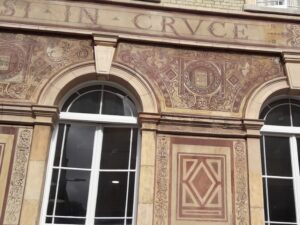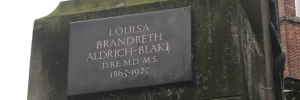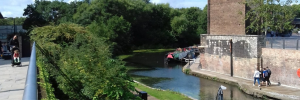Venture off busy Ludgate Hill, away from the crowds of tourists visiting or photographing St Paul’s Cathedral, and you will find a quiet narrow road – Carter Lane – and a very surprising building. It looks more like something you would find in Italy rather than the City of London. It has an ornate entrance, Renaissance elements, including Venetian style and round windows and tall very thin chimney stacks. This Grade II listed building is, however, very much linked to that Sir Christopher Wren’s Baroque masterpiece, St Paul’s Cathedral, as it used to be the cathedral’s choir school.



There has been a song school associated with St Paul’s Cathedral ever since its foundation in 604 but the Choir School for boy choristers was refounded in the 1120’s when 8 poor boys were given a home and education in return for singing at the Cathedral services. At the same time there was also a grammar school at St Paul’s – teaching Latin – and the two schools eventually merged, with the choristers graduating to the grammar school to finish their education. However, in 1509 the Grammar School was re-founded by John Colet, the Dean of St Paul’s, becoming St Paul’s School, which is now a prestigious private school in Barnes, west London with only a tenuous link to the Cathedral.
The Choir School continued separately and during the reign of Elizabeth I was famous more for its acting than its singing – the Queen loved the child actors. They had their own resident playwrights and performed regularly before the Queen at Greenwich Palace. This made them very unpopular with Shakespeare and his company of actors, as they were very much their competition.
In 1666 the school building in St Paul’s churchyard was destroyed in the Great Fire of London and over the next 200 years the school moved between various locations with significant periods when there were no boarding facilities for the choristers.


The building in Carter Lane really came about thanks to a sustained 60 year campaign by a formidable lady – Maria Hackett. In 1810 she took her young orphaned cousin to become a chorister at St Paul’s but was horrified when she found out how the boys were treated – not being given proper accommodation or education and being hired out to sing at public concerts and dinners, with the singing masters profiting from them. She started a campaign for a proper school for them, but it was only in 1874, when she was ninety, that she finally saw the purpose-built school, designed by Francis Penrose, the Surveyor of the Fabric of St Paul, open in Carter Lane. It is remarkable, in particular, for the amazing external sgraffito decoration, made by scratching through a layer of paint to reveal a lower layer of contrasting colour. The building has just undergone sensitive restoration which has saved this decoration and shows it off at its best.

In the 1960s there was a plan to widen Carter Lane, which would have threatened the school, so in 1967 it moved to new, purpose-built accommodation in New Change, next to St Paul’s Cathedral, incorporating the tower of the bombed Wren’s St Augustine church. Fortunately, the road widening never happened, so the original school was saved. It is now a youth hostel providing very reasonably priced accommodation right next to St Paul’s. Walking down Carter Lane you get tantalising glimpses through the windows of some lovely murals. These are in the residents’ dining room and are of two of Sir Christopher Wren’s City churches – St Paul’s and St Stephen Walbrook.
To see this lovely building and also hear more about Shakespeare’s links to the area come on my Best of Blackfriars walking tour.



